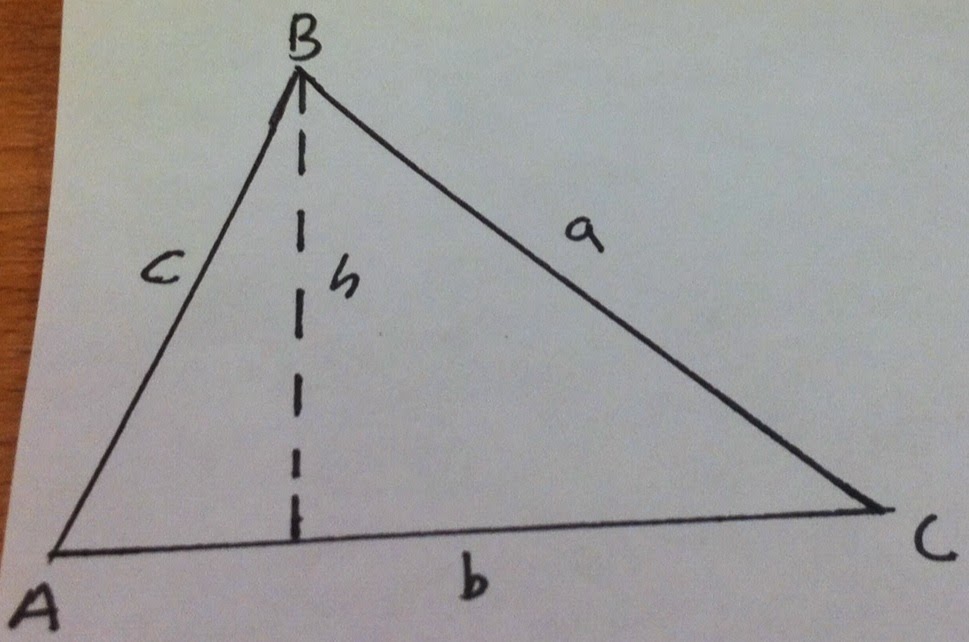How do the graphs of sine and cosine relate to each of the others?
In the graphs shown below, the highlighted sections are Quadrant I (red), Quadrant II (green), Quadrant III (orange), and Quadrant IV (blue). We know this because in the Unit Circle, Quadrant I is 0 pi to pi/2, Quadrant II is pi/2 to pi, Quadrant III is pi to 3pi/2, and Quadrant IV is 3pi/2 to 2pi. This is because, as we know, the Trigonometric graph is ultimately an outstretched version of the Unit Circle. Sine is red, cosine is green, tangent is orange, and cotangent blue.
 |
| DESMOS GRAPH CREATED BY MRS. KIRCH |
Tangent:
Tangent is similar to sine and cosine because (first of all) tangent is tan(x)= sin(x)/cos(x). Since both sine and cosine are positive in the first quadrant, tangent is also positive because you end up dividing a positive by a positive. Looking at the second quadrant, we see that sine (the red line) is also positive, while cosine is negative. This means that tangent becomes negative. Looking at quadrant three, we see that both sine and cosine are negative, so tangent is positive. In quadrant 4, sine is negative and cosine is positive, so tangent is negative as well. Also, we know that we have asymptotes when when we have an undefined answer, which is basically when cos=0. Cosine=0 at 0 degrees, 90 degrees, and 270 degrees. In terms or radians, those values are, (respectively), pi/2 and 3pi/2. This means that we have a tangent graph whenever sine touches the x-axis, but not when cosine touches the x-axis.
 |
| DESMOS GRAPH CREATED BY MRS. KIRCH |
Cotangent:
Being the inverse of tangent, the trigonometric identity of cotangent is cot(x)= cos(x)/sin(x). In quadrant one, both cosine and sine are positive, making the blue cotangent line positive (please ignore the orange cotangent line which I forgot to delete from my graph). In quadrant number 2, since cosine is negative while sine is positive, then cotangent is negative in the second quadrant. Cotangent is positive in quadrant three since both sine and cosine are negative, and cotangent is negative in quadrant four since sine is negative while cosine is positive. As for the asymptotes, we know that we have asymptotes when our answer is undefined. This is only when sin=0, which happens at 0 degrees, 180 degrees, and 360 degrees, which are, in terms of radians, o pi, pi, and 2pi.
 |
| DESMOS GRAPH CREATED BY MRS. KIRCH |
Secant:
We know that the trig function of secant is sec(x)= 1/cos(x). This means that our graph for secant will from, and be the inverse of, cosine. Knowing this, we can predict that the secant graph will sprout from the cosine graph, and this is verified by the graph above, where both our secant and our cosine graphs touch. Wherever cosine has mountain, a secant valley touches it, and wherever cosine has a valley, a secant hill touches it. Looking at quadrant one, we see that since cosine is positive, secant is positive. In both quadrant two and quadrant three, cosine is negative, which means that secant is also negative. Lastly, when we look at quadrant four, cosine is positive, making secant positive as well. Now, let's talk asymptotes. We know that cosine has to be 0 in order to have the undefined answer that would give us our asymptote. Since we know that cosine is adjacent/hypotenuse, we know that this asymptote happens whenever x is 0, and this happens at pi/2 and 3pi/2. We have asymptotes in these two areas, meaning that the secant graph can't cross those x-values.
 |
| DESMOS GRAPH CREATED BY MRS. KIRCH |
Cosecant:
As we all know, the trigonometric function of cosecant is csc(x)= 1/sine(x). Just like in the secant graph, our cosecant graph sprouts directly from the sine graph. This means that wherever sine has a mountain, cosecant has a valley. Wherever sine has valley, cosecant has a mountain. In quadrant one and quadrant two, cosecant and sine are positive. In quadrant three and quadrant four, both cosecant and sine are negative. Let's go over those asymptotes. We know that sine has to be equal to 0. This happens at 0 pi, pi, and 2pi. These are the locations which the secant graph will NEVER cross








































